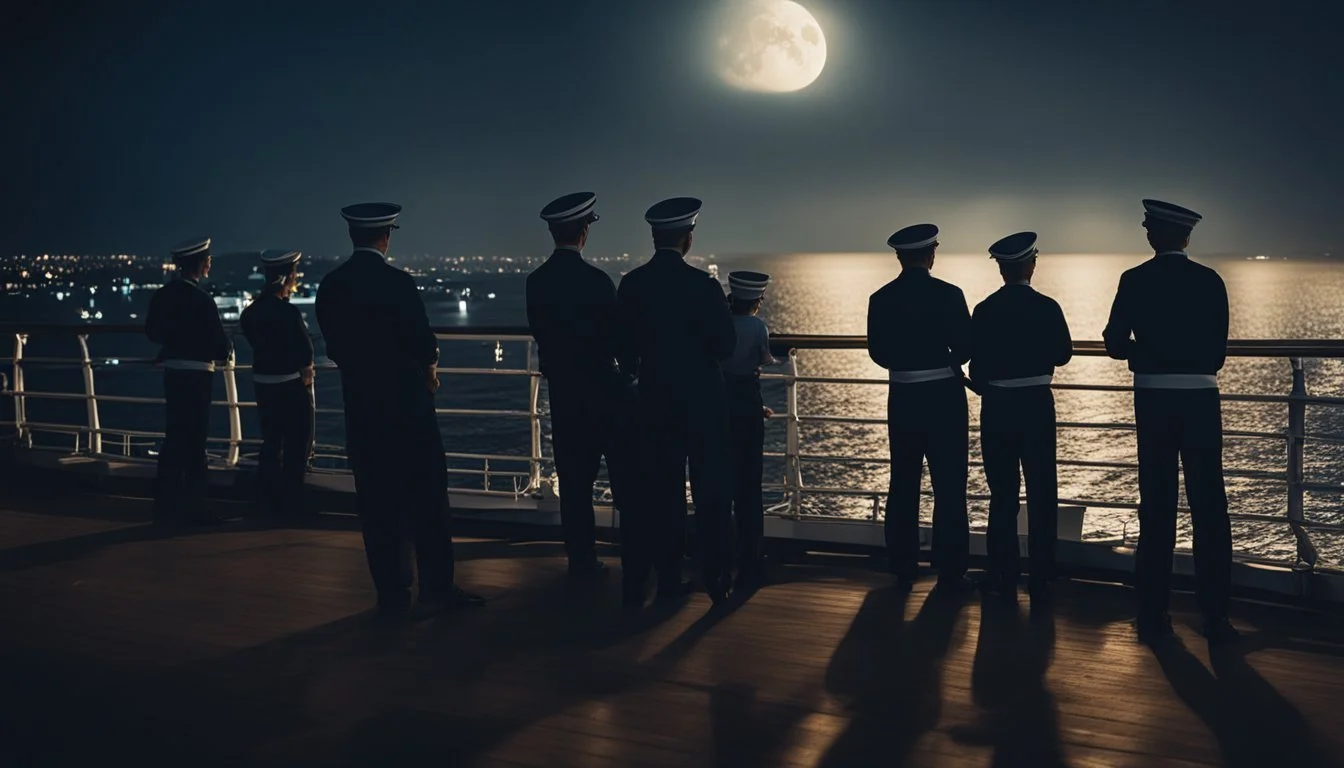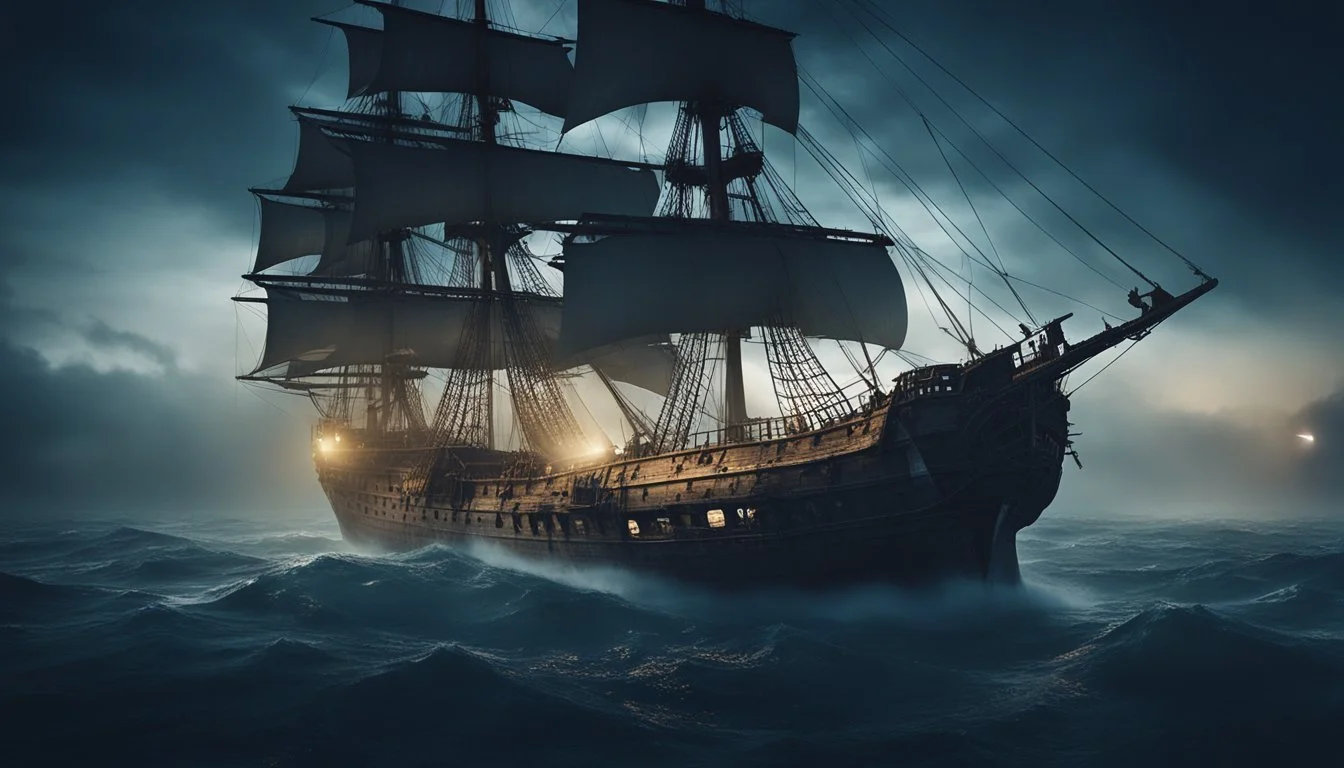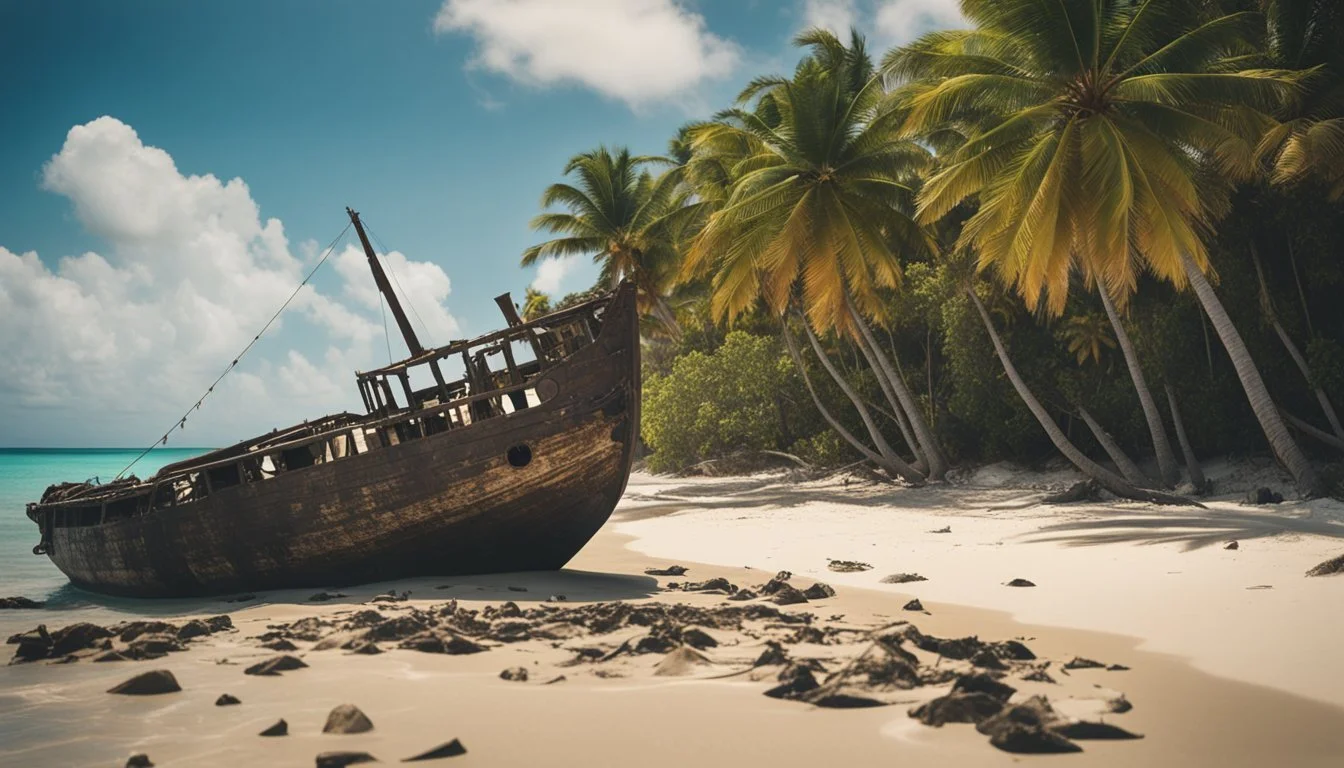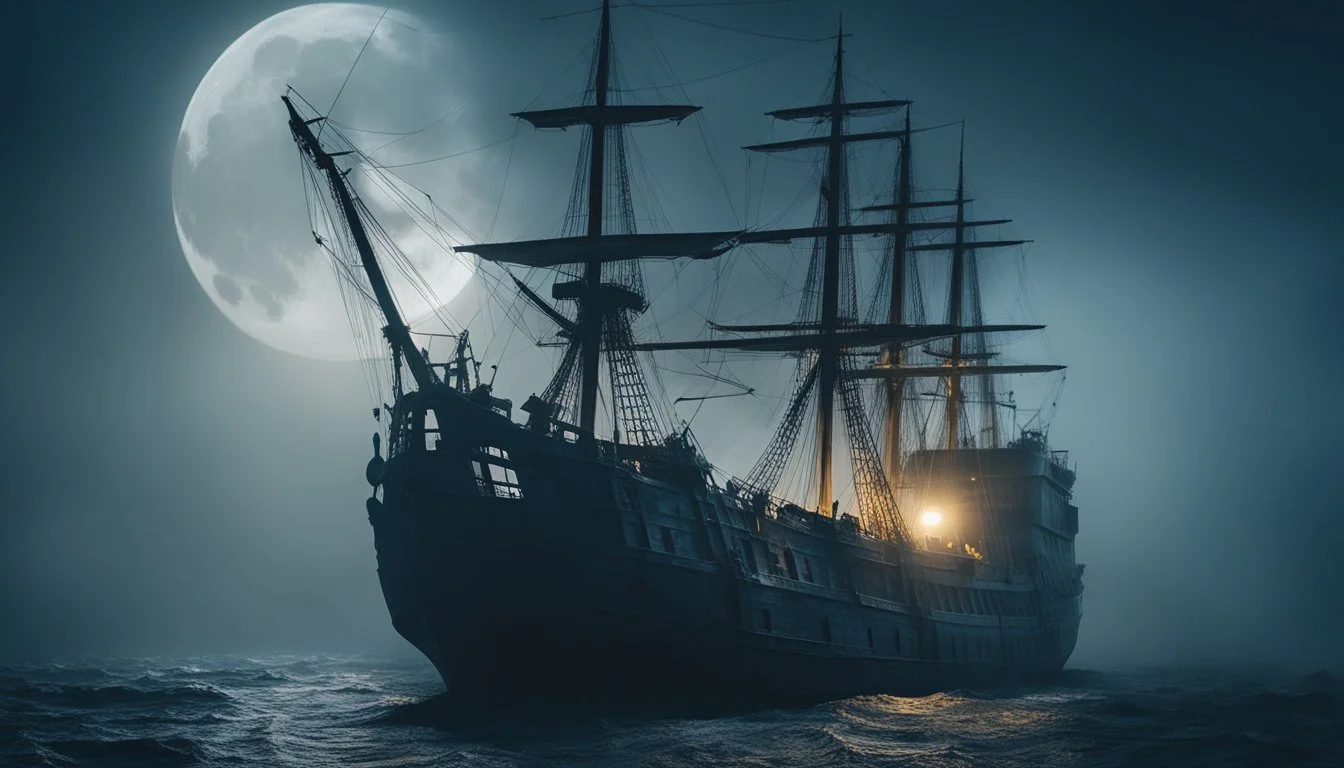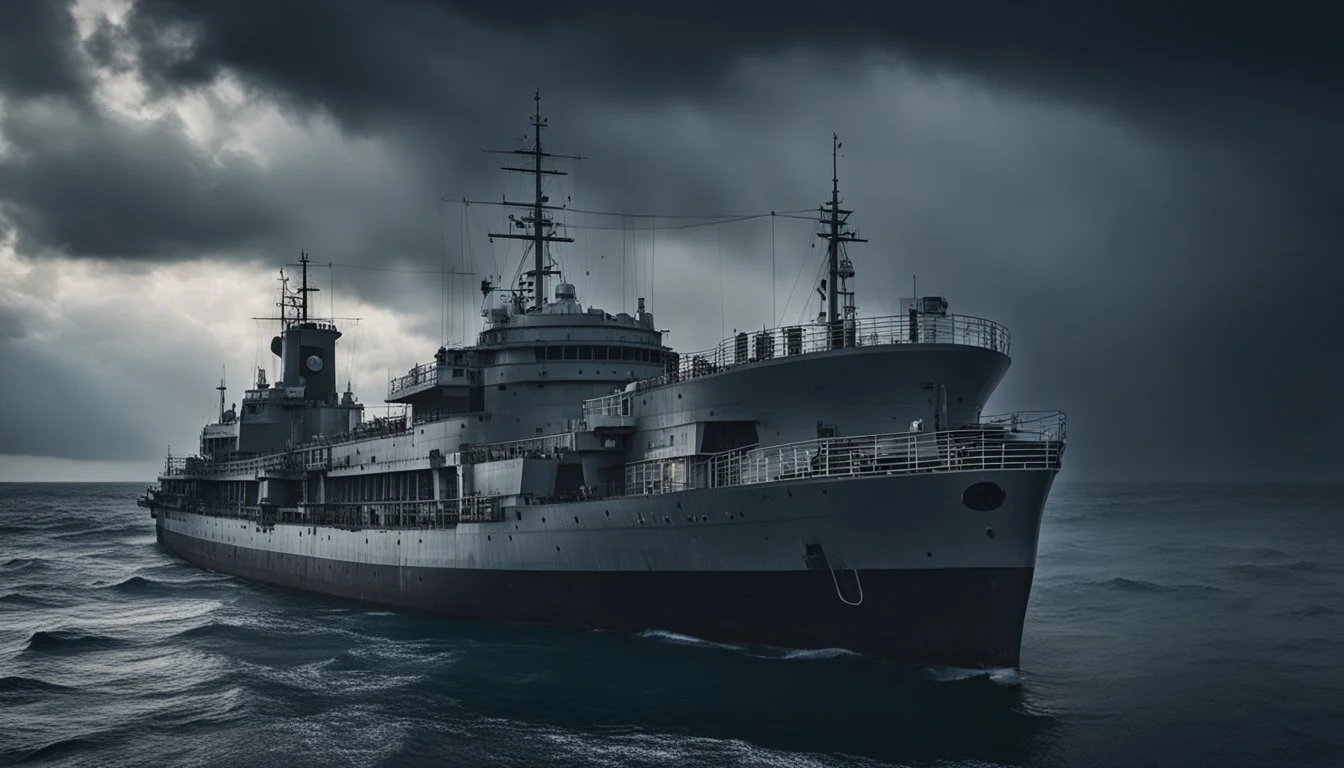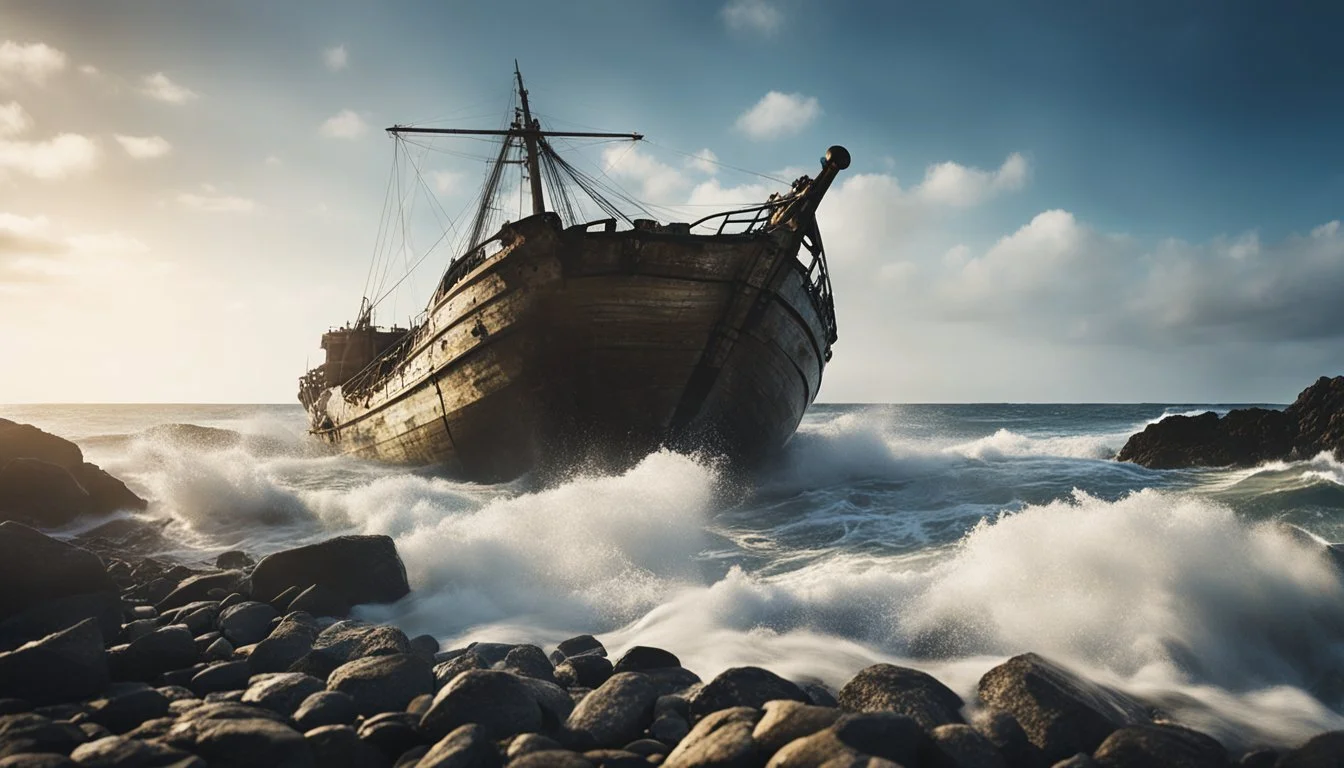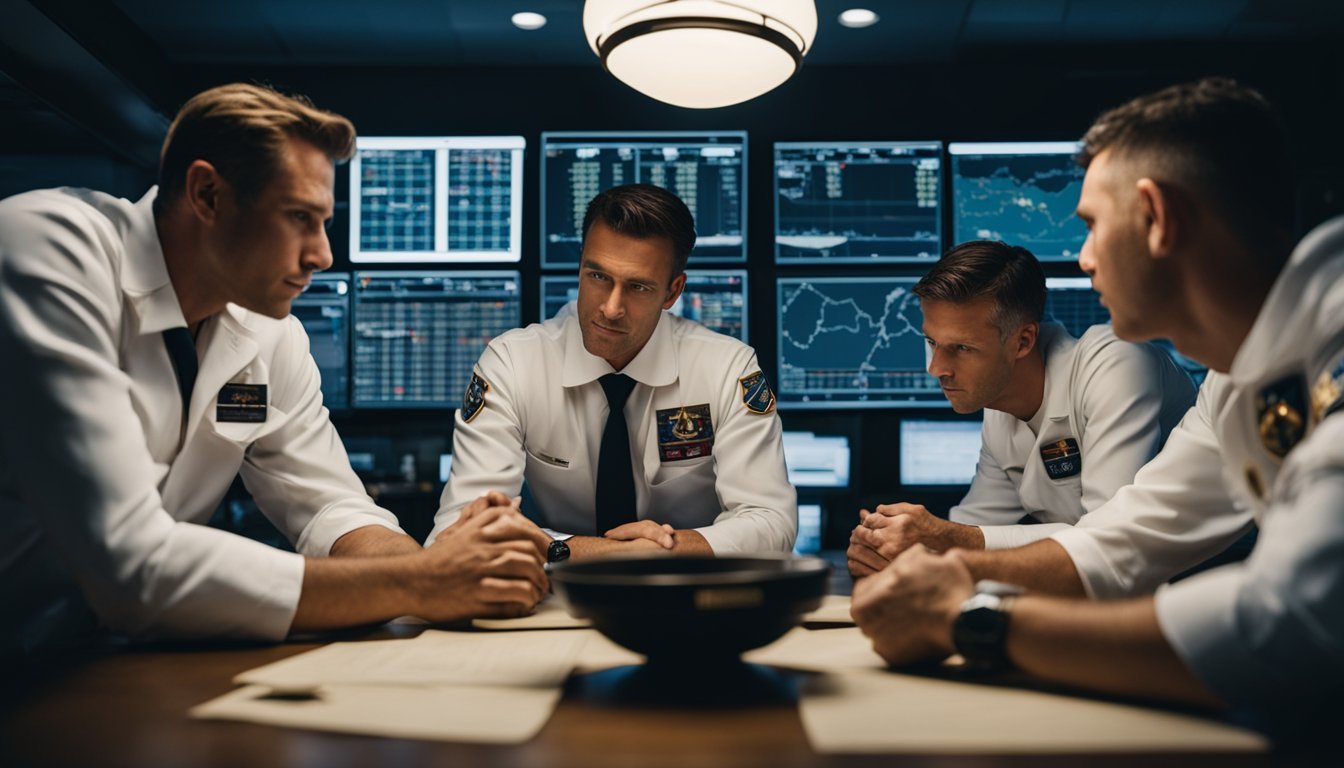10 True Crime Documentaries About Sailors
Tales of Mystery and Danger on the High Seas
True crime documentaries captivate audiences by delving into the darker aspects of human behavior and real-life mysteries. For those intrigued by tales of the sea, there are compelling stories involving sailors who have encountered peril, crime, and deception on the high seas. These documentaries provide a unique perspective on maritime crime, exploring cases that involve everything from piracy to mysterious disappearances.
What drives the fascination with true crime documentaries about sailors? The vast, unpredictable nature of the ocean combined with the isolation of a life at sea creates a perfect backdrop for intriguing and often horrifying stories. These narratives offer insight into the challenges faced by sailors and the sometimes deadly consequences of their voyages.
1) The Unsolved Disappearance of the Mary Celeste Crew
The fate of the Mary Celeste's crew is one of maritime history's enduring mysteries. On December 5, 1872, the British brig Dei Gratia discovered the ship adrift near the Azores. The Mary Celeste, seaworthy but abandoned, carried a six-month supply of food and water, with the crew's personal belongings still intact.
The last entry in the captain's log indicated the ship had been nine days and 500 miles away from its found location. The ship's sails were partially set, and it had no sign of struggle or violence. Most peculiar was the missing lifeboat, hinting that the crew left in a hurry but under what circumstances remains unknown.
Speculation around the disappearance ranges from mutiny and piracy to natural disasters and paranormal events. Despite extensive investigations and numerous theories, no concrete evidence has ever surfaced to explain the crew's fate.
Watch the documentary for an in-depth exploration of this mystery: Mary Celeste: The Ghost Ship of the North Atlantic (2017).
2) Maritime Murder: The Murky Waters of the Joyita
The documentary "Maritime Murder: The Murky Waters of the Joyita" (2023) explores one of the most perplexing maritime mysteries. The Joyita, a merchant vessel, set sail in 1955 but was later found adrift without its crew.
Personal belongings, including firearms and navigational instruments, were missing. A doctor's bag containing medical supplies was discovered on deck, suggesting a hurried departure.
The Joyita's disappearance remains unsolved, leading to extensive speculation and multiple theories. Some suggest piracy, while others believe in a sudden emergency causing the crew to abandon ship.
The documentary meticulously pieces together these fragments, offering insights without sensationalizing the tragedy. It's a compelling watch for those intrigued by maritime mysteries.
3) Pirate Hunter: The Killings of Vessels in the Caribbean
This documentary examines the violent encounters between pirate hunters and pirates in the Caribbean during the Golden Age of Piracy.
Pirate hunters were often commissioned by colonial authorities to capture or kill pirates who threatened merchant ships and coastal settlements.
The film documents notable figures like Henry Morgan, who led successful campaigns against pirates, capturing cities like Panama City in 1671.
These confrontations were brutal, often ending in bloody battles as pirate hunters sought to put an end to piracy in the region.
Suspenseful and historically accurate, "Pirate Hunter" delves into the dangerous pursuit of justice on the high seas.
For more information, visit IMDB or Wikipedia.
4) Mystery Beneath the Waves: The Ghost Ship Jenny
The story of the Ghost Ship Jenny is one of the most eerie maritime mysteries. According to legend, the ship was discovered in 1840, frozen in ice in the Antarctic, with the entire crew frozen to death. The vessel was originally a whaling ship that had gone missing seven years earlier.
When a passing whaler, the Hope, found Jenny, they boarded to find a grim scene. The crew was still at their stations, and the captain was reportedly still seated at his desk, pen in hand. His final log entry read, "May 4, 1823. No food for 71 days. I am the only one left alive."
There is much debate over the legitimacy of the story, with many considering it a maritime legend rather than a documented event. Regardless, it remains a captivating tale that has inspired numerous references in popular culture and media, reflecting the enduring allure of ghost ship mysteries.
For more information on this legend, visit Ghost Ship Jenny on Wikipedia.
5) Blood on the High Seas: The Tragic Fate of the SS Edmund Fitzgerald
On November 10, 1975, the SS Edmund Fitzgerald, a massive freighter, faced a violent storm on Lake Superior. The ship was carrying iron ore from Superior, Wisconsin, to Detroit, Michigan.
The storm intensified, unleashing hurricane-force winds and towering waves. Despite the crew's efforts, the ship sank. All 29 crew members perished in the disaster.
The Edmund Fitzgerald was the largest ship on the Great Lakes at the time, making its loss even more significant.
The tragedy has spurred numerous investigations and expeditions, including a notable one in 1995 to recover the ship’s bell.
This event remains one of the most infamous maritime disasters in Great Lakes history. The song "The Wreck of the Edmund Fitzgerald" by Gordon Lightfoot further immortalizes the tragedy.
For more on the SS Edmund Fitzgerald: Wikipedia (1975).
6) Enigma of the Lost Sailors of the Carroll A. Deering
In 1921, the Carroll A. Deering, a five-masted commercial schooner, was found wrecked off the coast of North Carolina. The vessel, which had been traveling from Barbados to the United States, was discovered with no crew aboard.
Fifty-eight men were lost in the mysterious disappearance. A message in a bottle found in April 1921 suggested that the vessel had been captured by an oil-burning boat.
The disappearance of the crew remains unsolved. No definitive evidence has been found to explain their fate. The case has intrigued historians and maritime enthusiasts for decades.
Learn more: Carroll A. Deering - Wikipedia
7) Cold-Blooded Crimes aboard the SS Ourang Medan
The SS Ourang Medan is an infamous ghost ship that reportedly met a tragic fate in the late 1940s. The ship was said to be traveling through the Straits of Malacca when it sent a distress signal indicating that the entire crew was dead.
Rescue vessels discovered all crew members deceased, with expressions of terror frozen on their faces. This eerie discovery has intrigued and disturbed maritime historians and enthusiasts alike. There were no visible injuries on the bodies, adding to the mystery.
Shortly after the bodies were found, the ship reportedly caught fire and sank. This rapid sequence of events has fueled countless theories, from toxic gas leaks to supernatural forces. Despite numerous retellings, no official records confirm the existence of the SS Ourang Medan.
The story remains shrouded in mystery due to inconsistencies in reports and lack of credible evidence. Some researchers argue it to be an urban legend, yet its enduring allure continues to captivate those interested in maritime mysteries.
For more information on this enigmatic ship, you can visit Wikipedia.
8) The Maritime Massacre of the Batavia's Crew
In 1628, the Batavia, a ship of the Dutch East India Company, set sail on its maiden voyage from the Netherlands to the Dutch East Indies.
The ship ran aground on a reef near the Abrolhos Islands off Western Australia in June 1629.
With the captain away seeking help, Jeronimus Cornelisz, the junior merchant, seized control.
Cornelisz and his followers initiated a reign of terror, massacring those who opposed them.
The killings were part of Cornelisz's larger plan to steal the ship's treasure.
Rescue came when Captain Francisco Pelsaert returned with help, and Cornelisz and his men were captured.
The Batavia mutiny remains one of the most infamous maritime crimes in history.
For more information on this event, refer to the Wikipedia page on the Batavia.
9) Dark Waters: The Disappearance of the Grafton Sailors (2022)
Dark Waters: The Disappearance of the Grafton Sailors delves into the mysterious vanishing of a group of sailors from the small vessel, Grafton. In 2022, the documentary captivated audiences by piecing together the last known movements of the crew.
The film uses interviews with family members, maritime experts, and law enforcement officials to build its narrative. Archival footage and dramatic reenactments help convey the tension and uncertainty surrounding the incident.
An important element of the documentary is its examination of the harsh and often perilous conditions faced by sailors. It raises questions about maritime safety and the protocols in place to protect seafarers.
Viewers are taken through various theories about what might have happened to the Grafton and its crew, from accidental drowning to foul play. Each theory is backed by meticulous research and expert insights, making the documentary both informative and engaging.
Dark Waters: The Disappearance of the Grafton Sailors leaves a lasting impact by shedding light on the dangers of life at sea, encouraging further discourse on improving maritime safety.
For more information, visit IMDb.
10) Murder on the Horizon: The Tale of the MV Joyita
In 1955, the MV Joyita embarked on a routine voyage from Apia, Samoa, but never reached its destination. The vessel was found five weeks later, adrift in the South Pacific, without a soul on board. The disappearance of all 25 passengers and crew members sparked numerous conspiracy theories.
The ship, originally built in 1931 as a luxury yacht for Hollywood director Roland West, had since fallen into disrepair. The pipes were corroded, and the radio's range was reduced to only about two miles due to faulty wiring. Despite these issues, Captain Thomas H. Miller chose to set sail.
When the MV Joyita was finally discovered, it was partially submerged. Lifeboats and much of the cargo were missing. The eerie condition of the ship led many to suspect foul play or piracy, yet no definitive evidence has been found.
This haunting case remains one of maritime history's greatest enigmas. The fate of the passengers and the circumstances surrounding their disappearances continue to captivate those fascinated by nautical mysteries.
For more information about the MV Joyita, visit Wikipedia.
Overview of True Crime Documentaries
True crime documentaries have gained significant attention for their in-depth examination of real-life criminal cases. These documentaries captivate audiences by presenting detailed narratives and exploring complexities within the justice system.
Defining the Genre
True crime documentaries typically focus on actual criminal cases, presenting evidence through interviews, archival footage, and expert analysis. They delve into various types of crimes, including homicides, kidnappings, and fraud, among others. The genre differentiates itself by offering a factual representation of events rather than fictionalized accounts, often striving for a balance between storytelling and factual accuracy. Key elements include a focus on investigative processes, legal proceedings, and personal stories of victims and perpetrators.
Popularity and Impact
The popularity of true crime documentaries has surged, thanks in part to their ability to keep viewers engaged with compelling narratives. Platforms like Netflix have played a significant role in making these stories accessible to a broader audience. The impact is evident in increased public interest in criminal justice issues and renewed discussions on unsolved cases. Additionally, these documentaries often serve as a platform for raising awareness about systemic issues within the justice system, prompting social and legal reforms in some instances.
True crime documentaries not only entertain but also educate, making a lasting impression on viewers and society.
Historical Context of Maritime Crimes
Maritime crimes have a rich and often dark history, intertwined with the evolution of international law and the challenges of enforcing order on the open seas. Notable cases and the development of maritime law provide a fascinating backdrop to the crimes committed by sailors.
Notable Historical Cases
One of the most infamous maritime crimes is the mutiny on the HMS Bounty in 1789. Led by Fletcher Christian, the mutineers seized the ship and cast Captain William Bligh and loyal crew members adrift. This event highlighted the potential for conflict and lawlessness aboard ships during long voyages.
Piracy also played a significant role in maritime crime history. Figures such as Blackbeard terrorized the seas in the 18th century, attacking merchant vessels and coastal settlements. Their actions forced nations to collaborate in suppressing piracy, leading to significant naval battles and legal measures against captured pirates.
Maritime Law and Jurisdiction
Maritime law, or admiralty law, evolved to address crimes at sea. Early maritime codes like the Laws of Oleron in the 12th century provided rules for ship conduct and dealing with offenses. These laws were crucial in maintaining order and ensuring justice on the high seas.
Jurisdiction in maritime law is complex because crimes can occur in international waters. Various treaties and international agreements, such as the United Nations Convention on the Law of the Sea (UNCLOS), outline how nations can claim jurisdiction and prosecute maritime crimes. UNCLOS, established in 1982, has been critical in setting guidelines for handling piracy, illegal fishing, and other maritime offenses.
The Psychology of Sailors Involved in Crime
The psychology of sailors involved in crime is a complex and multifaceted subject. Sailors often face unique stressors, including long periods of isolation, high-risk environments, and intensive physical and mental demands.
Isolation can lead to feelings of loneliness and depression. This may increase susceptibility to criminal behavior as coping mechanisms break down.
Risk-Taking Behavior is inherent in the profession. The high-stakes nature of their work can make sailors more prone to engaging in illegal activities.
Hierarchy and Authority play significant roles in a sailor's life. Strict adherence to commands may create environments where criminal activities are either covertly allowed or harshly punished.
Camaraderie and Loyal Bonds among crew members may also influence criminal behavior. The close-knit nature of sailor communities can lead to collective decision-making, sometimes resulting in group participation in crimes.
Economic Pressures could also be a factor. Sailors, especially those from lower socioeconomic backgrounds, may turn to crime out of financial necessity.
Understanding these psychological aspects provides insight into the reasons why sailors might engage in illegal activities. These factors include isolation, risk-taking behavior, strict hierarchical structures, close-knit relationships, and economic pressures, each of which can contribute to criminality in this unique profession.

